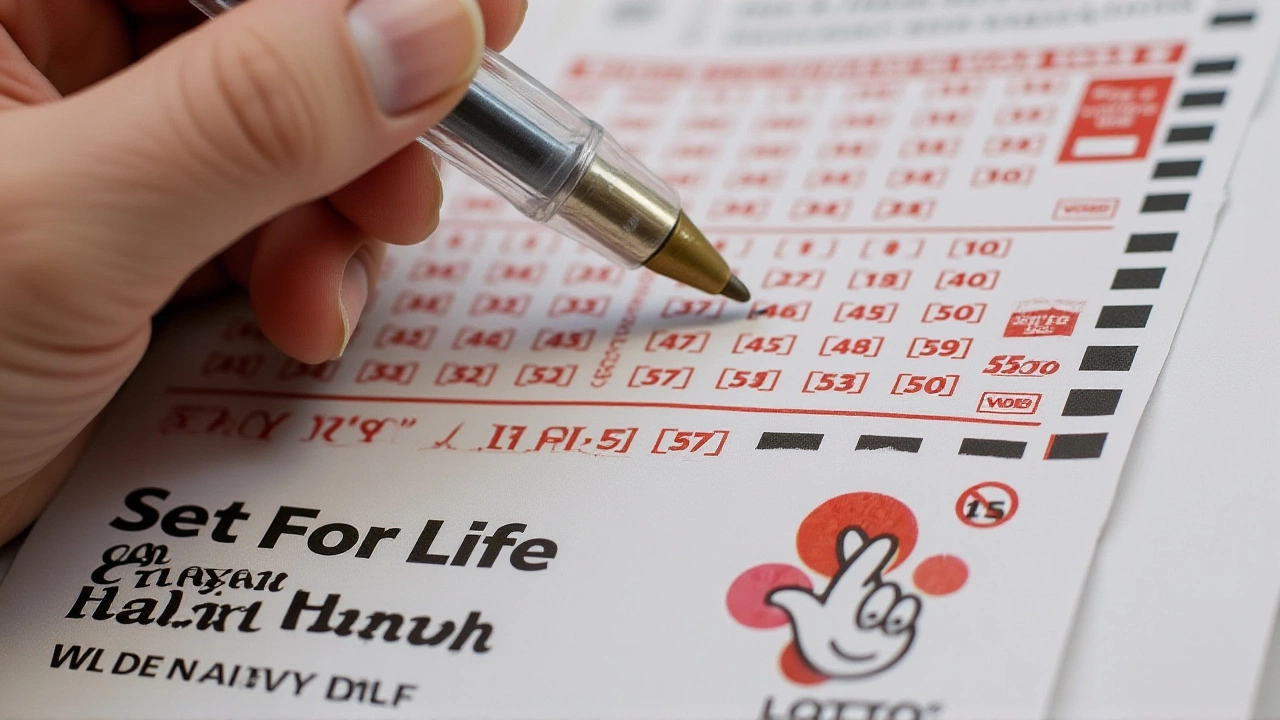
No £10,000 Monthly Jackpot in July 17 Set For Life Draw – 199,921 Winners Share £1.49 M
The July 17 Set For Life draw left the £10,000‑a‑month jackpot untouched, while 199,921 winners split £1.49 million. Find out what this means for future players.
When you hear National Lottery, a state‑licensed gambling scheme that runs draw games, scratchcards and online play across Britain. Also called UK Lotto, it combines the thrill of chance with funding for good causes. The National Lottery attracts millions of players each week, but beyond the headlines there are several core pieces that keep the whole system ticking.
One of those pieces is the lottery draw, the scheduled event where numbered balls are randomly selected to determine winners. Draws happen twice a week for the main Lotto and once for the EuroMillions, and each draw follows strict procedures to guarantee fairness. Another essential component is the prize fund, the pool of money that is distributed as winnings, operational costs and community grants. Roughly 50% of ticket sales flow into this fund, meaning the bigger the sales, the larger the jackpots and charitable contributions.
In practice, the National Lottery encompasses a range of game formats – from traditional draw tickets to instant scratchcards, pre‑printed tickets that reveal a prize immediately when scratched and online casino‑style games. Each format requires its own set of rules, but they all share two common demands: a reliable random number generator for draws and a transparent accounting process for the prize fund. The regulator – the Gambling Commission – oversees compliance, ensuring that the draw process is truly random and that a fixed percentage of revenue consistently reaches community projects.
Because the prize fund is directly tied to ticket sales, any surge in participation instantly raises the size of upcoming jackpots. That relationship influences player behaviour: bigger jackpots attract more buyers, which in turn fuels larger community grants. Likewise, the odds of winning a top prize depend on the structure of each game; for example, Lotto offers a 1 in 45 million chance for the jackpot, while scratchcards can provide better odds for smaller wins but no life‑changing sums.
Responsibility is woven into the whole model. The National Lottery runs a dedicated responsible‑gaming program, offering self‑exclusion tools and spending limits. These safeguards not only protect players but also help maintain public trust, which is crucial for sustaining ticket sales and, by extension, the prize fund.
All of these elements – draw mechanics, prize fund allocation, game variety, regulation and responsible play – create a tightly linked ecosystem. Understanding how they interact gives you a clearer picture of why a single ticket can fund a new sports field, a youth club, or a medical breakthrough, while also giving you a shot at a life‑changing win.
Below you’ll find a curated set of articles that dive deeper into each of these topics, from the mathematics behind the draw to real‑world examples of community projects funded by the lottery. Whether you’re a casual player curious about where your money goes or someone looking to maximize your chances, the collection ahead offers practical insights and up‑to‑date information.

The July 17 Set For Life draw left the £10,000‑a‑month jackpot untouched, while 199,921 winners split £1.49 million. Find out what this means for future players.